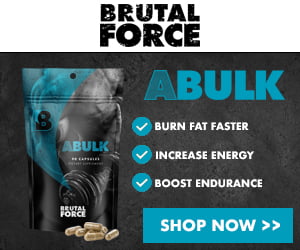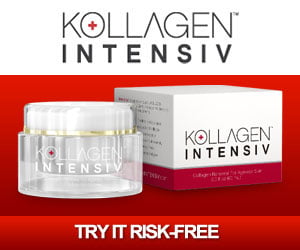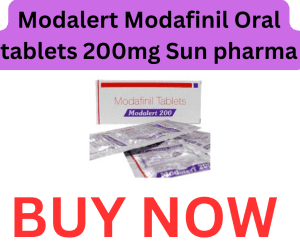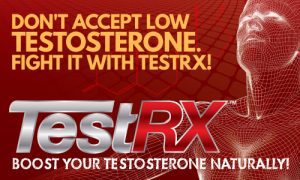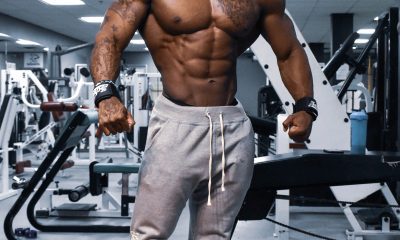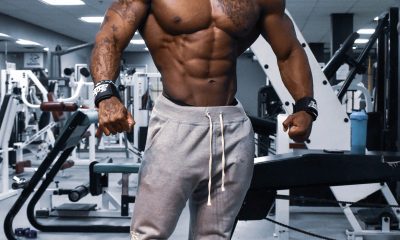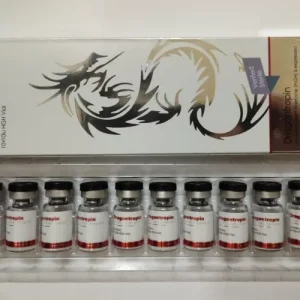Steroids
Proven Risks of Mixing Steroids and Alcohol

Steroids and alcohol are legal for persons aged 21 years and above in most parts of the world. While alcohol is purely recreational, the same cannot be said about steroids. Nevertheless, the two substances affect the body in many ways. But, have you ever asked yourself whether combining the two is good for you? Well, we have done some research and found some Risks of Mixing Steroids and Alcohol and surprising details.
Bodybuilders and other athletes love having fun, and that is without a doubt. However, the substances they consume to enhance their performance may not go well with alcohol. Alcohol is a combination of several chemicals that cumulatively slow down brain activity. Anabolic steroids, on the other hand, work by boosting testosterone levels, resulting in increased muscle mass and loss of fat. It is important to note that anabolic steroids are different from corticosteroids because they are used purely for anti-inflammatory purposes. This article will discuss steroids and the proven risks of mixing them with alcohol.
Related Article:: How are Steroids Abused?
Stomach Upsets, Ulcers, and Bleeding
When taken alone, Prednisone may cause serious side effects such as stomach bleeding. Similarly, excessive alcohol consumption causes stomach bleeding due to the wearing out of stomach walls and injury to the liver. But what happens when you mix the two substances? Your guess is as good as mine – the effects will be twofold. However, you can reduce the combined effects of alcohol and steroids on your stomach by eating before taking the substances. This is because a full stomach will reduce the probability of either of the substances interacting with your stomach lining. Alternatively, take alcohol and steroids separately to avoid their combined effect on the stomach.
Must Read:: Effects of Alcohol On Muscle Building
Reduced Immunity
While most steroids are not associated with a reduced immune system, the same cannot be said about alcohol. Excessive drinking compromises the drinker’s immune system, thus making them prone to opportunistic diseases. Pneumonia and tuberculosis are some diseases the body is exposed to in the case of excessive drinking. Additionally, people who have a condition known as autoimmune may take steroids that suppress immunity. While this may be justified medically, mixing the steroids with substances such as alcohol may lower immunity to dangerous levels. Most importantly, alcohol, being the potent depressant we know, may interfere with how you take your steroids. That includes forgetting to take the drugs at the right time or not following the necessary aftercare procedures. Any steroid user should put a stop to alcohol intake until they achieve the desired results.
Depression
Depression is a severe health issue brought about by alcohol and steroids. A regular steroid user can confirm that these drugs can have a toll on you. To escape the nasty side effects and mood changes, many steroid users have turned to alcohol. Well, this is not a good idea. Alcohol is known to cause extreme depression itself. So, what makes one think it can help them overcome another type of depression? It could be peer pressure or something else. But the thing is, mixing alcohol and steroids will only make the situation worse. Do yourself a favor and never try to cure depression by taking alcohol. Instead, find other treatment options for depression, such as counseling and psychiatric therapy.
Weakening of Bones
Osteoporosis, a condition characterized by weakening bones, may result from mixing alcohol and steroids. However, the condition usually occurs when one abuses alcohol. Steroids such as Prednisone may cause it alone, but it happens in one out of a thousand users. Moreover, osteoporosis is not severe enough to warrant medical intervention, but it can limit your lifting weights. It will also make it challenging to perform high-intensity exercises. To be safe, avoid mixing alcohol and steroids such as prednisone to avoid this condition.
Breathing Difficulties
Melatonin and several other steroids, when mixed with alcohol, cause the blood sugar level to rise or drop. This means the absorption rate of the steroids is increased or lowered respectively. In either case, breathing becomes irregular and complex. However, it is more dangerous if alcohol increases the effect of a drug like melatonin. One will not only have breathing difficulties but may also develop weak joints, drowsiness, and lack of balance.
Risk of Developing Diabetes
Steroids are not known to induce diabetes, but long-term use can cause the condition. Alcohol, on the other hand, more so excess of it, causes high blood pressure and diabetes. A combination of alcohol and steroids and alcohol, however little the latter is, may cause one to develop diabetes. The two substances and their combination destabilize a person’s sugar levels. Whether you’re genetically susceptible to a particular type of diabetes or not, taking alcohol while using steroids triggers a rise in blood sugar. To be safe, don't take any form of alcohol during your steroid cycle or under any steroid treatment. Unlike other risks, this particular one does not have a safe way of getting around it. You have to choose between steroids or alcohol, a decision that may require the services of a therapist.
Related Article:: Down the Hatch: Alcohol’s Effect on Muscle Growth
Steroid and Alcohol Abuse
Studies have shown that risks associated with mixing steroids and alcohol stem from abusing the two substances. Steroid abuse is not very common among athletes, but individuals who have used it for a long may develop some complications. Additionally, steroid use requires discipline and commitment. Also, one must practice self-care to deal with some adverse side effects of steroids. Failure to adhere to any of these may result in some of the following conditions.
- Premature baldness.
- Growth of breasts in men.
- Reduced sperm count.
- Irregular menstrual periods in women.
Alcohol abusers are more likely to develop side effects than occasional drinkers. However, the former category of drinkers is addicted to the substance and hence cannot control how they take it. The last step towards safely using steroids and alcohol is knowing whether you're abusing alcohol. Occasional drinkers don't have much to worry about. They can stop taking alcohol whenever they want until their steroid cycle is complete. Here are signs you may be abusing alcohol and at greater risk of developing the conditions discussed.
Signs You’re Abusing Alcohol
Abusing alcohol may cause adverse side effects such as high blood pressure and death. Steroid use and alcohol go well for as long as you drink responsibly. Please note that this option is for those who can't do without it altogether. Otherwise, it is highly recommended that you don't take alcohol alongside steroids because of the risks we shall share with you. Here are signs that your alcohol consumption is not healthy. Only a qualified medical practitioner can determine whether a person’s alcohol consumption is healthy.
- Paranoia
Unfounded fear is the first sign that you’re not drinking responsibly. Paranoia involves impaired judgment, where the person cannot distinguish between real and non-existent threats.
- Feelings of Invincibility
It is a severe effect of alcohol abuse and addiction where one thinks one can tackle any threat head-on. Feelings of invincibility are even more substantial if one is a bodybuilder.
- Poor Appetite
If you notice a gradual loss of appetite despite training and using steroids, your alcohol consumption is dangerous. No or reduced appetite means your system is overwhelmed by the alcohol you’re taking.
Must Read:: Best Diet Plan for Bodybuilders 2019
- Stupor
This is where one does not comprehend anything happening around them after taking too much. Drinking to this point without being forced shows that one has developed alcoholism. It is the most dangerous stage for one to take steroids because they may skip their dose and fail to care for themselves.
When to Seek Help
Health problems associated with mixing steroids and alcohol may be fatal if ignored. If you have a drinking problem and feel like using steroids simultaneously, you should consult your doctor first. Most importantly, let your trainer know about this so they can arrange how to do it. Although some side effects may appear mild, it is best to monitor them closely to avoid developing into something serious. Finally, ensure to take every substance, whether a steroid drug or alcohol, in moderation to avoid these risks.
Overall
We might spend the whole day arguing against mixing steroids and alcohol, but we can’t escape the truth; it will always be there. The best we can do is find solutions that include being cautious. With over a hundred types of alcoholic drinks today, you will always find one that will go easy on you. But if you could avoid mixing these two substances, it would be for the better.
Steroids
Decoding IGF-1 LR3: A Comprehensive Guide to its Benefits
IGF-1 LR3 (Insulin-like Growth Factor-1 Long Arg3) is a synthetic variant of IGF-1, a hormone produced by the liver in response to growth hormone (GH). Unlike GH, which works indirectly, IGF-1 directly facilitates the growth and repair of muscle cells.
This modified version of IGF-1 is engineered to avoid binding with IGF-binding proteins, extending its half-life to 20–30 hours. As a result, it remains active in the body significantly longer than natural IGF-1.
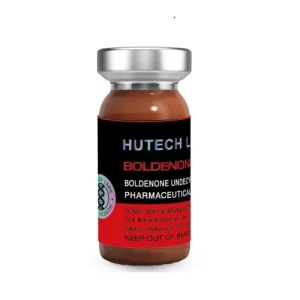 Click here to BuyBoldenone 300 by Hutech
Click here to BuyBoldenone 300 by Hutech
Many performance athletes incorporate IGF-1 LR3 post-workout to enhance muscle growth, speed up recovery, and support fat loss. When injected into specific muscle groups, it often produces localized effects. Additionally, it helps with nutrient distribution and, in some cases, improves insulin sensitivity.
On the other hand, human growth hormone (HGH) operates more broadly and indirectly, stimulating the liver to produce IGF-1 and offering more systemic benefits such as improved skin health, joint support, and fat reduction, albeit at a slower pace.
Typical IGF-1 LR3 doses range from 20–50 mcg daily, administered subcutaneously or intramuscularly, often following a workout.
Steroids
AOD-9604: The Fat-Burning Peptide Explained
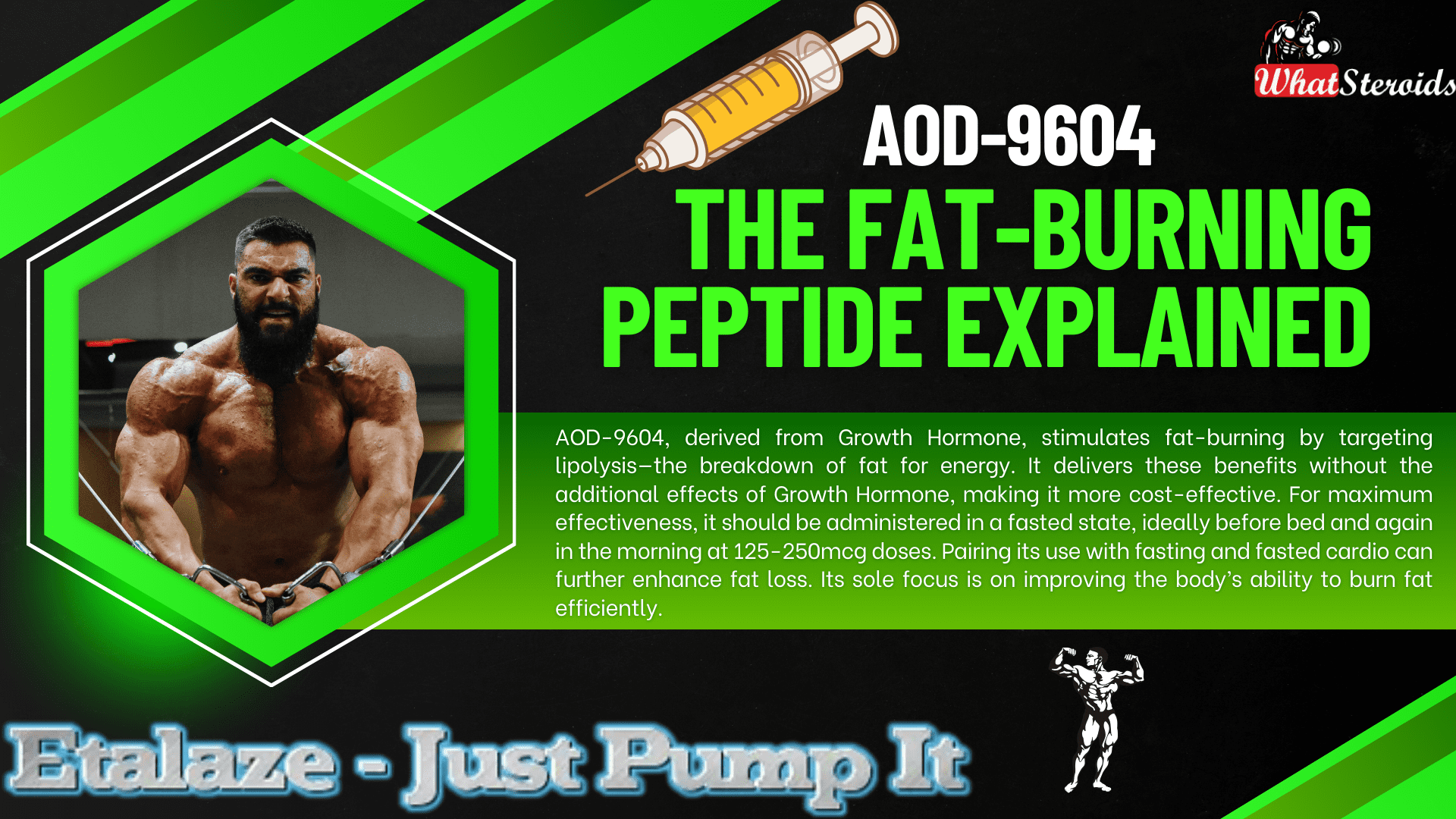
AOD-9604, along with the similar HGH Frag 176-191, is a peptide derived from Growth Hormone that includes only the amino acids in HGH responsible for stimulating fat breakdown, known as lipolysis.
This means that these peptides offer the fat-burning benefits of HGH without its other effects—whether beneficial or adverse—and come at a lower cost.
Related Article: Anavar Cycle for Men and Women
Lipolysis refers to the process where fat cells are broken down to be utilized as energy. AOD-9604 promotes accelerated fat loss by increasing the body's use of fat as fuel.
For optimal results, the peptides should be used in a fasted state. AOD-9604 and Frag 176-191 are most effective when administered at a dose of 125-250mcg before bedtime (at least 3-4 hours after eating) and in the morning at the same dose, followed by a fasting period of 3-4 hours, ideally combined with fasted cardio.
Check Out Dragontropin HGH 100 IU by Dragon Pharma
Similar Peptides with Fat-Burning Effect
Here’s a list of 10 peptides similar to AOD-9604, each with a brief description:
Ipamorelin: A growth hormone-releasing peptide (GHRP) that stimulates the natural release of growth hormone, promoting fat loss, muscle growth, and improved recovery without affecting other hormones like cortisol or prolactin.
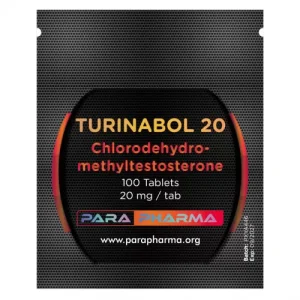 Click Here to Buy: Turinabol 20 by Para Pharma
Click Here to Buy: Turinabol 20 by Para Pharma
CJC-1295: A peptide that increases growth hormone and IGF-1 levels, aiding in fat loss, muscle gain, and improved sleep quality. It has a long half-life, making it convenient for users.
HGH Frag 176-191: A fragment of human growth hormone specifically designed for fat-burning. It targets adipose tissue without the broader effects of full-length HGH.
Tesamorelin: Known for reducing visceral fat, this peptide stimulates the release of growth hormone and is often used for weight management and metabolic health.
BPC-157: While primarily known for healing and recovery, BPC-157 can support fat loss indirectly by improving gut health and reducing inflammation.
Melanotan II: Originally developed for skin tanning, it also has appetite-suppressing properties, making it useful for weight management.
Thymosin Beta-4 (TB-500): Focused on healing and recovery, it can enhance physical performance and indirectly support fat loss through improved activity levels.
GHRP-6: A growth hormone-releasing peptide that boosts appetite and metabolism, aiding in muscle growth and fat loss.
Semaglutide: A GLP-1 receptor agonist that regulates appetite and blood sugar levels, making it effective for weight loss and metabolic health.
MK-677 (Ibutamoren): A growth hormone secretagogue that increases growth hormone and IGF-1 levels, promoting fat loss, muscle gain, and improved recovery.
List of Peptides With a Counteractive Effect Bodybuilders Must Avoid
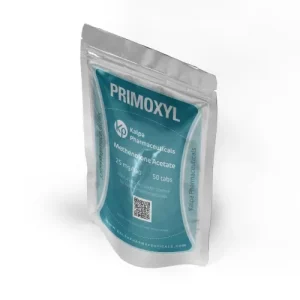 Click Here to Buy Primoxyl 25 by Kalpa Pharmaceuticals
Click Here to Buy Primoxyl 25 by Kalpa Pharmaceuticals
Some peptides can inadvertently lead to fat gain due to their effects on metabolism and appetite regulation. Here are a few that bodybuilders might want to avoid or use cautiously:
- GHRP-6 – While it stimulates growth hormone release, it also significantly increases appetite, which can lead to excess calorie consumption and fat gain.
- IGF-1 LR3 – This peptide enhances muscle growth but can also promote fat storage if not carefully managed with diet and training.
- MK-677 (Ibutamoren) – Though technically a growth hormone secretagogue rather than a peptide, it boosts GH levels but often leads to increased hunger and potential fat accumulation.
- CJC-1295 with DAC – While effective for muscle growth, its prolonged GH release can sometimes lead to unwanted fat retention if not paired with a strict diet
Overall
AOD-9604, derived from Growth Hormone, stimulates fat-burning by targeting lipolysis—the breakdown of fat for energy. It delivers these benefits without the additional effects of Growth Hormone, making it more cost-effective. For maximum effectiveness, it should be administered in a fasted state, ideally before bed and again in the morning at 125-250mcg doses. Pairing its use with fasting and fasted cardio can further enhance fat loss. Its sole focus is on improving the body’s ability to burn fat efficiently.
Read More: How Much Do You Know About B-AET? A Fat Burner You’ve Been Missing
Bodybuilding
Understanding Trenbolone-Induced Cough (“Tren Cough”)

Trenbolone, a potent anabolic steroid, can sometimes cause “tren cough”—a sudden and intense coughing episode shortly after injection. Although not exclusive to Trenbolone, it is more commonly associated with this substance due to its highly irritant nature.
 Click Here To Buy 1-Test Cyp 100 by Nakon Medical
Click Here To Buy 1-Test Cyp 100 by Nakon Medical
Mechanisms Behind Tren Cough
Solvent and Carrier Irritation
Trenbolone formulations often include volatile solvents like benzyl alcohol or benzyl benzoate, which may irritate lung tissues when absorbed quickly into systemic circulation.
Prostaglandin Release
Trenbolone promotes increased production of prostaglandins, particularly PGF2α. This compound triggers contraction in the smooth muscles of the lungs, leading to bronchoconstriction and coughing.
Micro-Oil Embolism
Tiny oil droplets from an injection can reach capillaries and travel to the lungs, causing mild embolic reactions that lead to temporary oxygen deprivation and coughing.
Histamine and Mast Cell Activation
For some individuals, Trenbolone triggers histamine release and mast cell activation, mimicking an allergic response and causing bronchospasms and cough reflexes.
Related Article: Best Syringes for Steroid Injection on Amazon
Using Salbutamol (Albuterol) to Manage Tren Cough
- Salbutamol, a widely-used β2-adrenergic receptor agonist, can alleviate tren cough symptoms by:
- Relaxing bronchial muscles, easing spasms that cause coughing.
- Inhibiting prostaglandin effects, reducing bronchoconstriction associated with PGF2α.
- Opening airways, preventing severe respiratory restrictions in susceptible individuals.
Application Methods
Inhaler (Optimal)
Take 1–2 puffs of salbutamol (100–200 mcg) 5–10 minutes before a Trenbolone injection. If coughing occurs afterward, additional puffs can swiftly resolve the issue.
Oral Tablets (Moderate)
Consuming 2–4 mg tablets 30–60 minutes before injection offers slower, longer-lasting relief but may be less effective than inhalation methods.
Nebulizer (Severe Cases)
For individuals with frequent episodes, nebulized doses of 2.5 mg salbutamol can provide substantial relief.
Preventive Measures to Reduce Tren Cough Risk
- Inject slowly to minimize systemic absorption and irritant effects.
- Split doses to lower reaction severity with smaller quantities.
- Opt for ventrogluteal injection sites, which have fewer blood vessels, reducing oil embolism risk.
- Choose lower-concentration solutions to lessen irritation, as higher concentrations (e.g., Tren Ace 200 mg/ml) are more likely to provoke reactions.
What Other Steroids Can Induce Coughing?
Here's a curated list of peptides, SARMs, and PEDs that may potentially cause coughing or respiratory irritation in bodybuilders and fitness enthusiasts:
Peptides
IGF-1 LR3 (Insulin-like Growth Factor): Known for its anabolic effects, IGF-1 LR3 can occasionally cause mild respiratory irritation due to systemic absorption.
TB-500 (Thymosin Beta-4): While rare, improper injection techniques or high doses may lead to transient coughing episodes.
GHRP-6 (Growth Hormone-Releasing Peptide): This peptide can stimulate histamine release, potentially leading to bronchospasms and coughing.
SARMs (Selective Androgen Receptor Modulators)
RAD-140: (Testolone) Some users report throat irritation or coughing, often attributed to solvents used in liquid formulations.
YK-11: Known for its myostatin-inhibiting properties, YK-11 may cause mild respiratory discomfort in sensitive individuals.
LGD-4033 (Ligandrol): Though uncommon, some users experience coughing due to carrier solvents or allergic-like reactions.
PEDs (Performance-Enhancing Drugs)
Boldenone Undecylenate (Equipoise): This injectable steroid can cause “Equipoise cough,” similar to tren cough, due to oil embolism or irritant solvents.
Testosterone Suspension: The water-based formulation may lead to coughing episodes if injected improperly or absorbed rapidly.
Nandrolone Decanoate (Deca-Durabolin): While less common, coughing can occur due to histamine release or systemic irritation.
More Tips to Minimize Coughing Risks
- Use proper injection techniques to avoid embolic reactions.
- Opt for lower-concentration solutions to reduce irritant effects.
- Consider antihistamines or bronchodilators for individuals prone to respiratory sensitivity.
Read More: Joint Stiffness: How to Manage It While on AAS
Are There Alternatives to Cough-inducing Steroids?
Here are some alternatives to cough-inducing steroids that can provide similar anabolic effects while minimizing respiratory irritation:
Peptides
IGF-1 LR3 (Insulin-like Growth Factor)
Promotes muscle growth and recovery without the irritant properties of certain steroids.
TB-500 (Thymosin Beta-4)
Enhances tissue repair and reduces inflammation, making it a safer option for recovery.
BPC-157 (Body Protection Compound)
Known for its healing properties, it supports muscle repair and joint health.
SARMs (Selective Androgen Receptor Modulators)
RAD-140 (Testolone)
Provides significant muscle-building effects with fewer systemic side effects compared to traditional steroids.
LGD-4033 (Ligandrol)
Boosts lean muscle mass and strength without the risk of respiratory irritation.
MK-677 (Ibutamoren)
Stimulates growth hormone release, aiding in muscle growth and recovery.
Natural Alternatives
Turkesterone
A plant-based ecdysteroid that supports muscle protein synthesis and recovery.
Ecdysterone
Another natural compound that mimics anabolic effects without the harsh side effects.
Creatine Monohydrate
Enhances strength and muscle mass through improved energy production during workouts.
Other Options
Human Growth Hormone (HGH)
Promotes muscle growth and fat loss, though it requires careful monitoring due to potential side effects.
Testosterone Boosters
Natural supplements like D-Aspartic Acid or Tribulus Terrestris can help optimize testosterone levels for muscle growth.
SARMs Alternatives
Legal and safer versions of SARMs are available, offering similar benefits without the risks associated with traditional SARMs.
Overall
We have explored the phenomenon of "tren cough," a sudden, intense coughing episode often caused by Trenbolone injections due to factors like solvent irritation, prostaglandin release, micro-oil embolism, or histamine activation. Preventive measures such as using salbutamol (via inhaler, oral tablets, or nebulizer), injecting slowly, splitting doses, and opting for lower-concentration solutions were highlighted.
Additionally, alternative compounds to tren cough-inducing steroids were discussed, including peptides like IGF-1 LR3 and TB-500, SARMs such as RAD-140 and LGD-4033, and natural options like Turkesterone, ecdysterone, and creatine. These alternatives provide anabolic effects while minimizing respiratory side effects. The conversation also underscored the importance of proper injection techniques and thoughtful compound selection to reduce risks.
-

 Steroids2 years ago
Steroids2 years agoShavers and Other Body Grooming Equipment for Bodybuilders In 2023
-

 Steroids2 years ago
Steroids2 years agoChatGPT and Other Avenues to Find Great Bodybuilding Coaches
-

 Steroids2 years ago
Steroids2 years agoBest Oil Recommendations Before Competition for Subtle Shimmer
-

 Steroids2 years ago
Steroids2 years agoPowerlifting Vs Power Building: Find Out the Big Difference and When to Shift Between the Two
-

 Nutrition2 years ago
Nutrition2 years agoEverything Nutritional Food: What’s Too Much Or Too Little
-

 Bodybuilding Products1 year ago
Bodybuilding Products1 year agoTelmisartan In Bodybuilding: An Expert’s Advice
-

 Anabolic Steroids1 year ago
Anabolic Steroids1 year agoLegality of Anabolic Steroids In Latin America
-

 Beginners2 years ago
Beginners2 years agoTren Cycle for Beginners
-

 Bodybuilding1 year ago
Bodybuilding1 year agoChia Seeds in A Bodybuilder’s Diet: An Expert’s Advice
-

 Bodybuilding8 months ago
Bodybuilding8 months agoPrimal Movements: Our Ultimate Guide for Maximum Results
-

 Anabolic Steroids9 months ago
Anabolic Steroids9 months agoJoint Stiffness: How to Manage It While on AAS
-

 Steroids12 months ago
Steroids12 months agoAnadrol Cycle: Benefits, Doses, Alternatives, etc.
-

 Bodybuilding1 year ago
Bodybuilding1 year agoList of FDA-Approved Peptides
-

 Bodybuilding2 years ago
Bodybuilding2 years agoCompetition Prep Cycle for Pro Bodybuilders
-

 Bodybuilding9 months ago
Bodybuilding9 months agoHow Effective is Bone Broth for Recovery?
-

 Steroids10 months ago
Steroids10 months agoOmnitope (Oxytocin)
-

 Bodybuilding1 year ago
Bodybuilding1 year agoHow Much Is Too Much Cardio? Understanding Heart Rate Zones
-

 Steroids9 months ago
Steroids9 months agoSleeping Positions for Effective Muscle Recovery
-

 Bodybuilding1 year ago
Bodybuilding1 year agoCalorie Dumping: A Bodybuilder’s Guide
-

 Bodybuilding8 months ago
Bodybuilding8 months ago2nd Edition of Natural Bodybuilding Competition Facts
-

 Anabolic Steroids11 months ago
Anabolic Steroids11 months agoHow Much Do You Know About B-AET? A Fat Burner You’ve Been Missing
-

 Bodybuilding1 year ago
Bodybuilding1 year agoDemystifying Hypertrophy Training
-

 Bodybuilding8 months ago
Bodybuilding8 months agoAre Nootropics a Better Option to AAS?
-

 Product Reviews11 months ago
Product Reviews11 months agoTop Vitamins for Skin Health
-

 Steroids4 months ago
Steroids4 months agoOstarine For Beginners: The Ultimate Guide

